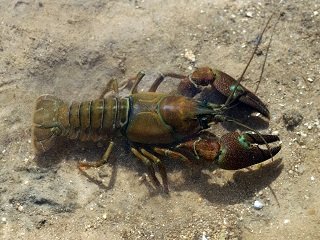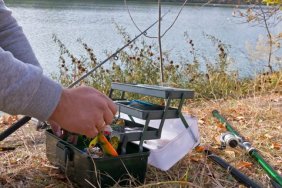 Live bait is an excellent way to entice fish to strike, and you can find varieties of bait yourself or pick it up at a bait shop, so there’s no shortage. A popular bait among anglers is crawfish, the effectiveness of which is showcased by the sheer number of lures designed to imitate them. You can snag crawfish of your own to use as live bait, and today we’ll take a look at how to accomplish this task.
Live bait is an excellent way to entice fish to strike, and you can find varieties of bait yourself or pick it up at a bait shop, so there’s no shortage. A popular bait among anglers is crawfish, the effectiveness of which is showcased by the sheer number of lures designed to imitate them. You can snag crawfish of your own to use as live bait, and today we’ll take a look at how to accomplish this task.
Before we get into catching and rigging your crawfish, it’s important to note that you should only use bait caught from the waters where you’ll be fishing. The spread of the rusty crawfish is a big need for this diligence, as it’s notorious for being able to raise its claws and ward off gamefish protecting their eggs, which severely hurts bass populations in lakes where the rusty is introduced. Keep this in mind when you’re collecting crawfish.
One simple way to catch crawfish is to scoop them from roadside ditches with a net after a heavy rain. Often times you can catch a good amount this way. Crawfish traps work wonders, as well. If you can pick up a few, bait them and submerge them along river banks or beneath docks.
Soft crawfish (craws that have just shed their shell to grow a new one) are even better. The problem, however, is that during this phase they’re very wary and impossible to catch. If you’re not extremely lucky to catch them during the soft shell phase, you can always keep the crawfish you do catch in an aquarium and feed them until they shed, then use them as bait when their shells are soft.
When it comes to rigging a crawfish, it helps to remove their claws. This makes them easier targets for fish. Hook them through the tail with a hook big enough hook to leave a gap to hook a fish and be sure to keep them moving so they don’t bury themselves under rocks. You want to rig them so the retrieve pulls them backwards and creates a more natural movement in the water.
Live crawfish are a great way to entice a wide variety of fish to strike, but catching them is the first step. Hopefully, the tips outlined today will help you collect a decent amount for your next trip to the lake.








